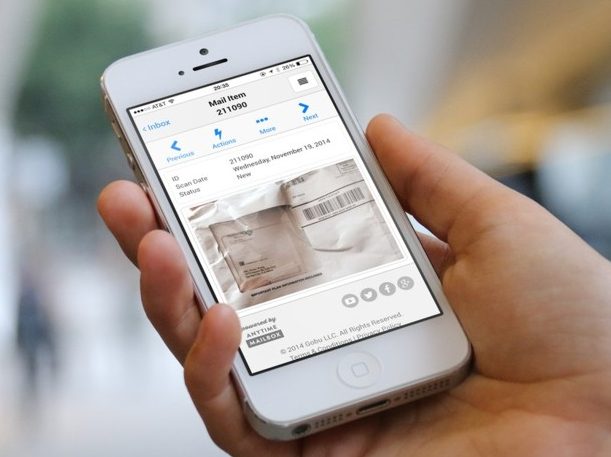In a world where our daily lives are governed by smartphones, digital apps, online bookings and instant activation, the postal system can feel a little… nostalgic. Traditional. Old hat. Out of touch. It’s no wonder it’s often referred to as ‘snail mail’.
Playful though the term might be, surely it’s only a matter of time before ‘snail mail’ gets the boot?
Where letters and written correspondence are concerned, the numbers appear to be declining. According to the US Postal Service, total mail volume reached 154.2 billion in 2015, down from 213.1 billion in 2006.
That’s a 27% decrease in a decade.
This may feel like impending doom for mail forwarding operators within the virtual office sector.
Yet it’s difficult to imagine a world without physical mail. An SMS never feels as genuine as a greetings card; lawyers and legal firms rely on certified printed documents alongside electronic files; and that qualification you worked so hard for really does deserve pride of (printed) place on your office wall.
So how do we make day-to-day mail faster and more relevant in the Digital Age?
One answer lies in so-called ‘digital mail’. It’s a service provided by some business center operators that works alongside their regular virtual office mail forwarding services, and enables clients to ‘see’ their mail electronically.
Nathan Jansch from Boardroom Executive Suites in Denver, CO, has been using a digital mailbox service at one of his centers for over a year, and has recently introduced it to his second center.
 “It’s a simple process,” Nathan explained. “We take a photo of the exterior envelope of each item of mail with an iPad. Our center representative uploads the photo to the digital mailbox system and assigns it to the relevant client, who then receives a notification via email or smartphone app that they’ve got new mail.”
“It’s a simple process,” Nathan explained. “We take a photo of the exterior envelope of each item of mail with an iPad. Our center representative uploads the photo to the digital mailbox system and assigns it to the relevant client, who then receives a notification via email or smartphone app that they’ve got new mail.”
“The client can log into their account and view the photo of the item of mail, which is often enough to decide whether it’s junk mail or something important.”
The system Nathan uses is Anytime Mailbox, which was founded in 2013 by entrepreneurs Matt Going and Marcel Buechi. This particular system gives clients four options to deal with separate items of mail, which is communicated to center operators at the click of a button: Open and scan the contents; Shred it securely; Recycle it; or Forward it to their home address.
More work, more value
As such, digital mail is an add-on facility to the regular mail forwarding service. Which begs the question: for busy receptionists and business center operators, does it create more work?
“It adds a little more time to the mail process,” Nathan agrees, “so we charge an additional fee for those who sign-up for the service. But it’s not complex. It has become part of our daily routine, and it’s worth it.”
Specifically, Nathan points out that it is particularly valuable for city center locations where parking is limited and high volumes of traffic make it difficult for clients to get in and out of the city simply to collect their mail.
“Seeing how the business center industry has progressed, digital mail helps us to be more competitive.”
In Denver, Nathan has seen high growth particularly within the shared office market. WeWork operates two locations along with a number of independent coworking spaces such as Enterprise 5280. According to Nathan, around 250,000 sq ft of new shared workspace opened in Denver in 2016 alone. Clearly, more people are gravitating towards flexible workspace, which is good news for the industry — but it forces workspace operators to become more competitive.
“Some competitors out there are willing to drop their rates and undercut to secure new clients,” Nathan commented, “so it seems as though we [operators] need to stay on the cutting edge of technological capabilities to stay relevant.
 “Mail has become less important, so services like business address and mail forwarding services have become less important, too.
“Mail has become less important, so services like business address and mail forwarding services have become less important, too.
“However, a digital mailbox helps us to stay relevant and provide a more efficient service to our clients.”
Nathan believes that digital mail will eventually become a mainstream service within the workspace industry — “We do everything on our mobile devices, so why not manage mail too?” — which presents opportunities for virtual office and business center operators.
It also spells good news for suppliers like Anytime Mailbox.
As competition among workspace operators intensifies and clients become more selective, the ability to add value is a prized possession. According to Matt Going, co-founder of Anytime Mailbox, instant services such as online mail is one such opportunity.
Among the day-to-day mail handling problems that some centers may experience, Matt notes that “virtual clients expect their mail to be 100% on time and accurate, but slack postal management or delayed response can result in negative reviews and a poor reputation for centers.”
Based on his experiences, Matt has found that “some centers have not reviewed or updated their mail handling practices in years,” adding that the process of dealing with virtual clients who call in to check for mail is “distracting, inefficient and operationally expensive” for the center.
“Having to go and check a client’s mailbox and then get back to them while they wait on-hold is so 1970s!” he adds. “Digital mail is a timely and accurate solution. What’s more, documents are uploaded to a protected platform and sent securely, which keeps important mail safe and demonstrates to clients that you are serious about online security.
“It adds new revenue opportunity, it improves operational procedures and separates your center from the competition. In short, it’s a 21st century solution.”


 Dr. Gleb Tsipursky – The Office Whisperer
Dr. Gleb Tsipursky – The Office Whisperer Nirit Cohen – WorkFutures
Nirit Cohen – WorkFutures Angela Howard – Culture Expert
Angela Howard – Culture Expert Drew Jones – Design & Innovation
Drew Jones – Design & Innovation Jonathan Price – CRE & Flex Expert
Jonathan Price – CRE & Flex Expert













